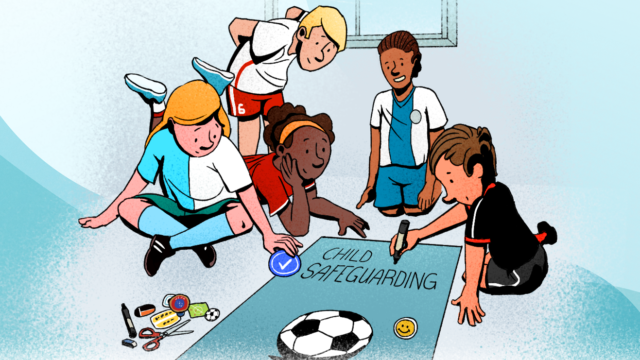Abigail’s Story
Introduce the exercise to the participants as being one about finding out about different values.
Give a copy of the following story to each participant and read it once for the group.
Ask everybody to read the story by him/herself and to rank the character (Abigail, Tom, Sinbad, Abigale’s mother, Bob) according to their behavior: who acted worst? Who second worst?…
After most of the participants have done their ranking, ask them to get together in small groups (3 to 6), to discuss about how they perceive the behavior of the characters. The task of the small groups is to come up with a common list – a list that everybody in the small group can agree on. Ask them to avoid using mathematical methods in order to establish the list, but rather to build that list on the basis of a shared understanding of what is good and what is bad.
After the small groups have come up with their lists, you can optionally repeat this phase by bringing two small groups together to form medium-size groups.
Evaluate the exercise in plenary by first bringing together the results and by discussing the similarities and differences between them.
Move on to ask on which grounds people made their ranking. How could they decide what was good and what was bad behavior. How difficult or easy it is to negotiate about values when having to establish a common list.
You can ask people how they managed to come up with a common list – which arguments worked to convince them, and why, and where there was a border of being able to understand and/or follow the other.
A possible follow up is to then look at where we learned what is good and what is bad – and what that tells us about what we have in common and what makes us different.
This story is very useful when introducing the otherwise abstract concept of values to participants, since it very clearly puts them in a situation where they have to apply values in order to make a ranking.
A variation to the exercise is to play it as done here, and then to repeat it with a changed story, in which all the women become men, and vice-versa. Does the same ranking still apply? Why do things change?
More variations are possible: include the age of the characters in the story and play around with it, make them all have the same gender, include ethnic or national background. And then look at how the changes in the story make a difference to your ranking and why that is.
In order to get the best results from the exercise, it is essential that you establish an open atmosphere in which every ranking of the story is okay and where you do not start “blaming” people for arguments you might consider strange or bad yourself.
Method Details
This method addresses
Added by
Contact with the Author
Abigail’s Story 0 reviews
Login to Write Your ReviewThere are no reviews yet.
Write Your Review
Related Listings

-
In Person Training
-
minimum 20 people who are divided in 2 groups, Up 20
-
40-120 minutes depending on depth of discussion















